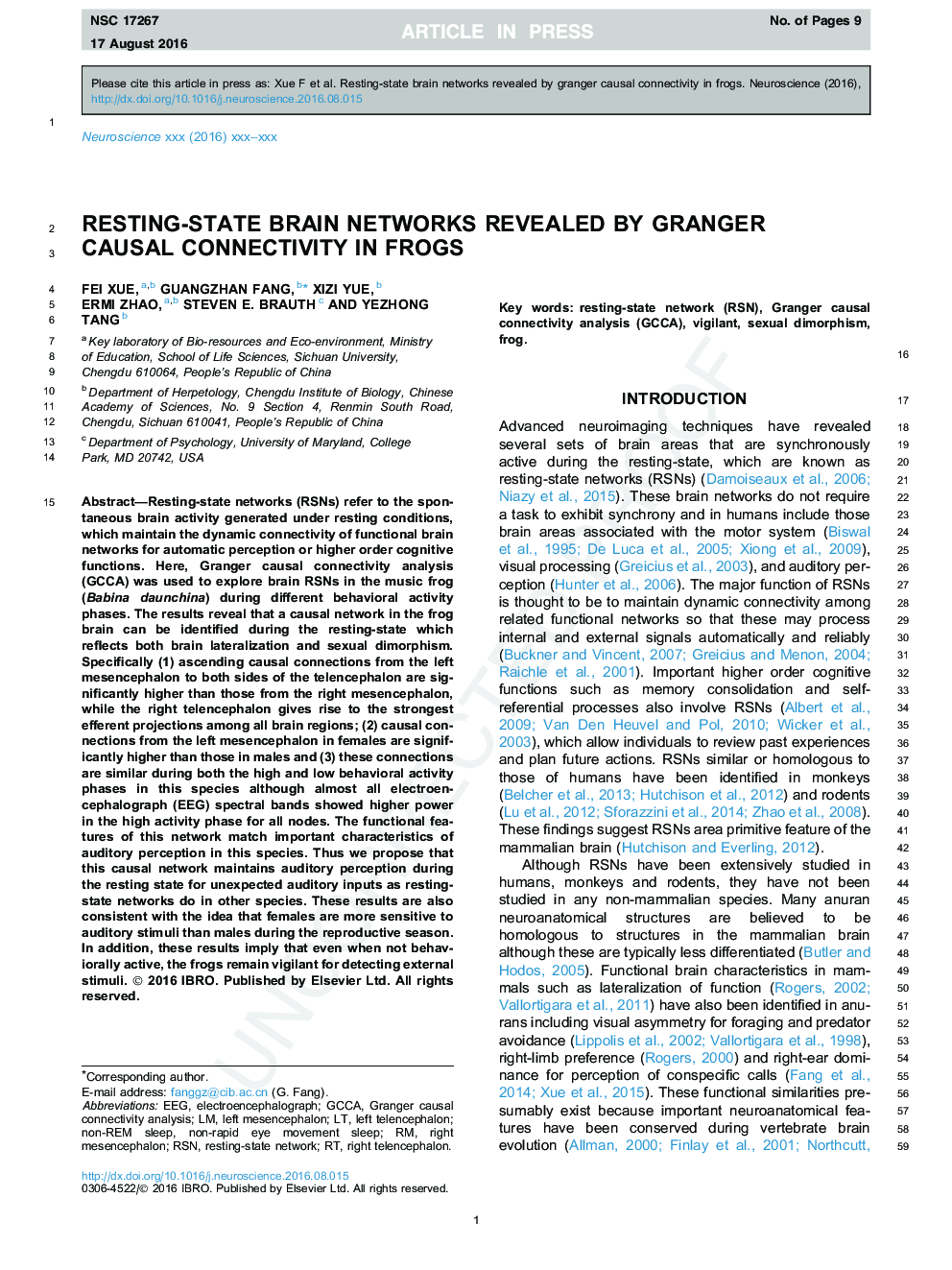| Article ID | Journal | Published Year | Pages | File Type |
|---|---|---|---|---|
| 6270801 | Neuroscience | 2016 | 9 Pages |
Abstract
Resting-state networks (RSNs) refer to the spontaneous brain activity generated under resting conditions, which maintain the dynamic connectivity of functional brain networks for automatic perception or higher order cognitive functions. Here, Granger causal connectivity analysis (GCCA) was used to explore brain RSNs in the music frog (Babina daunchina) during different behavioral activity phases. The results reveal that a causal network in the frog brain can be identified during the resting state which reflects both brain lateralization and sexual dimorphism. Specifically (1) ascending causal connections from the left mesencephalon to both sides of the telencephalon are significantly higher than those from the right mesencephalon, while the right telencephalon gives rise to the strongest efferent projections among all brain regions; (2) causal connections from the left mesencephalon in females are significantly higher than those in males and (3) these connections are similar during both the high and low behavioral activity phases in this species although almost all electroencephalograph (EEG) spectral bands showed higher power in the high activity phase for all nodes. The functional features of this network match important characteristics of auditory perception in this species. Thus we propose that this causal network maintains auditory perception during the resting state for unexpected auditory inputs as resting-state networks do in other species. These results are also consistent with the idea that females are more sensitive to auditory stimuli than males during the reproductive season. In addition, these results imply that even when not behaviorally active, the frogs remain vigilant for detecting external stimuli.
Keywords
Related Topics
Life Sciences
Neuroscience
Neuroscience (General)
Authors
Fei Xue, Guangzhan Fang, Xizi Yue, Ermi Zhao, Steven E. Brauth, Yezhong Tang,
